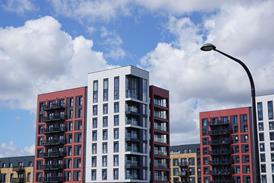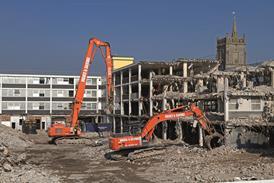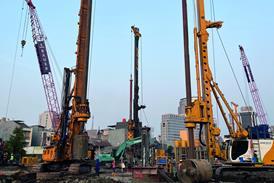The aim of the Integer programme is to prove how the thoughtful application of intelligent and green technologies will improve our homes and our lives within them.
The housing industry's conservatism is renowned, buttressed by memories of failed initiatives and rationalised against a belief that customers do not want change. Integer's basic proposition is that step-change innovation in housing is both desirable and achievable and that homes can be produced which are more cost effective, sustainable, adaptable and robust. We have to prove this to the industry by building homes that are radical, popular and mainstream.
Snowballing progress
In May 1996 a design team was formed which set about evaluating available design and technical solutions to improve housing performance. It worked in partnership with the Building Research Establishment, Berkeley Partnership Homes and the Building Research Housing Group. Individual local authorities and housing associations also actively supported this research, providing invaluable insights into the aspirations and demands of progressive social landlords. By end of 1997 a design assessment had been published and its conclusions synthesised into a concept model illustrating the potential of the Integer approach.
Then the team set out to turn this model into reality. In February the second phase of the project was launched in the House of Commons, at a meeting hosted by Tony Colman MP and supported by Hilary Armstrong, minister for housing and local government. This launch attracted new partners, including commercial companies gearing up to provide new information services and environmental solutions. Because the Integer programme was at the same time contributing to the winning bid for the prestigious Greenwich Millennium Village competition, the Housing Corporation (which funds most of the UK's affordable new housing) recognised our significance and provided financial support under its Innovation and Good Practice scheme.
Then Integer's activities were drawn to the attention of BBC1, which proposed that the model become a real setting for its proposed Dreamhouse series. Capitalising on this momentum, in just 12 weeks over the summer period our demonstration design was constructed on a site provided by BRE at Garston, Watford. Built using the construction management expertise of Wilcon Homes - the UK's sixth largest housebuilder - assisted by the leading environmentally-minded contractor Robson Dunk, the house demonstrates state-of-the-art solutions provided by some 150 individual suppliers.
Four-way thrust
The house unites four interrelated innovation strategies. First, design innovation means more space, improved safety, comfort and control for every householder. Integer homes will be affordable "lifetime homes'" for all incomes, lifestyles, age-groups and disability levels.
Second, the intelligence of Integer homes is founded on strategically planning its IT infrastructure. This supports an extensive range of communications, as well as applications such as entertainment, computing, security and home management. Integer homes are designed to ensure householders can take full advantage of a digital future.
Third, environmental performance is critical, achieved through the strategic application of green technologies to achieve low energy use, water conservation, waste reduction and the sustainable use of materials. The fundamental premise of the Integer programme - that intelligent and green solutions can be mutually supportive - has been fully justified through the use of smart metering and intelligent energy management systems.
The fourth innovation strategy relates to how Integer homes are built. Tremendous opportunities exist to improve the efficiency of the construction process by using such methods as prefabrication. Monitoring of the construction process for the demonstration house indicates that prefabrication has been extremely successful. Savings achieved on the construction process can be reinvested into the content of the homes, indicating higher specification, better performing homes can be achieved without significant on-cost.
Researching inhibition
Building better homes is not enough. The world if full of one-off demonstration homes which show what can be achieved but which have had no impact on the mass market. Achieving an impact requires profound understanding of the forces driving and inhibiting the market and a dynamic action programme to manage these forces. This is the purpose of Integer's research and communication programmes, which complement and reinforce the design and development programme. Four research projects are now underway which are looking at barriers to innovation and ways of overcoming them.
The first of these projects is investigating householders as consumers and tenants addressing the question of what people want. Creating a more customer-focused market is a prerequisite for delivering successful innovation in housing.
At the same time, houses have to be paid for and the financial institutions involved with home funding are in general highly conservative. We have difficulty funding "non-traditional housing", as Integer was advised by one of the county's leading funding institutions. Finding ways of sharing the financial risks and rewards of innovation in both social and private housing is the second Integer research project taking place.
We also recognise, however, that new-build housing represents only a small proportion of the opportunity and the challenge of improving housing performance. To achieve a major impact, Integer design strategies must also be available for the refurbishment and regeneration of housing and the development of these strategies represents the third of the research projects.
Finally, the experiences and lessons learned from the design and construction of the demonstration house are being captured and disseminated in a research report which will enable others to understand the potential of the design strategies, and contribute to this movement for innovation.
Getting the message over
Communicating the message forms a fundamental part of the Integer programme. Too often the house of the future has been portrayed as something few of us would wish to live in, let alone invest our money in. But the Integer house has received widespread coverage including 12 radio interviews and culminating in the house being used to host a peak viewing TV series.
Nearly all this coverage has been positive, illustrating people's readiness to welcome innovation which offers clear-cut benefits to both individuals and the community. "I love it - where can I buy one?" is a common response from visitors. Without doubt, the demand for innovation exists. The opportunity and the challenge for the housing industry is to develop and satisfy this demand.
Source
Building Homes



















